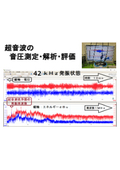Development technology of original ultrasonic systems - technology to control nonlinear phenomena of ultrasound -
The Ultrasonic System Research Institute has developed a technology for controlling the propagation of ultrasound through sweep oscillation using ultrasonic probes. Based on the propagation characteristics of the ultrasonic oscillation control probes, we set the conditions for sweep oscillation for each ultrasonic probe according to the intended use and interaction. By considering the vibration modes of the target objects, devices, tanks, and tools, it becomes possible to control low-frequency resonance phenomena through sweep oscillation conditions tailored to the system's vibration system. Even with an output of around 30W, it is possible to control the propagation of high sound pressure and frequency ultrasonic vibrations in tanks of 3000-5000 liters. <<Specific Example>> As a dynamic change, simultaneously with low-frequency resonance phenomena, the sweep oscillation conditions of the ultrasonic probe at 1-10 MHz enable the generation of 10th, 30th, 100th... harmonics, which can be applied to precision cleaning and nano-level dispersion. The key point is to analyze and evaluate the dynamic vibration characteristics of the system based on the measurement and analysis of sound pressure data. Propagation characteristics of ultrasound: 1) Vibration modes 2) Nonlinear phenomena 3) Response characteristics 4) Interactions
Inquire About This Product
basic information
By referencing statistical and mathematical thinking, we developed an original measurement and analysis method that takes into account the acoustic characteristics and surface elastic waves of the target object, thereby creating a new technology for understanding the relationships of various detailed effects related to vibration phenomena. The specific conditions for detailed sweep oscillation are determined based on experimental confirmation, as they are influenced by the characteristics of ultrasonic probes and oscillation equipment. In particular, the function generator has unique characteristics regarding high-frequency continuous oscillation, making measurement and analysis confirmation crucial. As a result, there are increasing instances where new nonlinear parameters are highly effective in relation to the propagation state of ultrasound and the ultrasound propagating through the target object. The combination of multiple ultrasonic oscillations and liquid circulation, along with various controls, will be optimized according to the following objectives: 1) Resonance phenomena and nonlinear phenomena 2) Interactions and the acoustic characteristics of various devices and materials 3) Sound, ultrasound, and surface elastic waves 4) Low frequency and high frequency (harmonics and subharmonics) 5) Oscillation waveform and output balance 6) Oscillation control and resonance phenomena 7) Device-specific vibration modes and sweep oscillation conditions ...
Price information
Feel free to contact us.
Delivery Time
※Feel free to contact us.
Applications/Examples of results
Example 1 1) Sweep oscillation control from 1.0 MHz to 15 MHz 1 2) Sweep oscillation control from 0.6 MHz to 5 MHz 2 3) Precision cleaning at the nano level using 42 kHz 35W (ultrasonic cleaner) Example 2 1) Sweep oscillation control from 3 MHz to 20 MHz 1 2) Sweep oscillation control from 60 kHz to 3 MHz 2 3) Nano dispersion processing of metal powder using 42 kHz 35W (ultrasonic cleaner) Example 3 1) Sweep oscillation control from 800 kHz to 22 MHz 1 2) Sweep oscillation control from 100 kHz to 11 MHz 2 3) Emulsification and dispersion processing of food and pharmaceuticals using 42 kHz 35W (ultrasonic cleaner) Example 4 1) Sweep oscillation control from 3 MHz to 20 MHz 1 2) Sweep oscillation control from 60 kHz to 3 MHz 2 3) Surface treatment of metal parts (technology for relaxation and uniformization of surface residual stress) Example 5 1) Sweep oscillation control from 1 MHz to 12 MHz 1 2) Sweep oscillation control from 80 kHz to 7 MHz 2 3) Surface treatment of resin parts (technology for relaxation and uniformization of surface residual stress)
Detailed information
-

Setting and confirming new evaluation criteria (parameters) (Note) Note: - Nonlinear characteristics (changes in bispectrum and autocorrelation) - Response characteristics (impulse response characteristics) - Fluctuation characteristics (inherent vibration modes due to the system) - Effects due to interactions (power contribution rate)
-

Ultrasonic propagation phenomenon
-

Ultrasonic propagation phenomenon: oscillation conditions
-

Ultrasonic probe sweep oscillation control technology (Development technology for original ultrasonic systems)
-

Ultrasonic propagation phenomenon: connection conditions
-

Ultrasonic probe sweep oscillation control technology (Development technology for original ultrasonic systems)
-

Ultrasonic probe sweep oscillation control technology (Development technology for original ultrasonic systems)
-

Ultrasonic probe sweep oscillation control technology (Development technology for original ultrasonic systems)
-

Ultrasonic probe sweep oscillation control technology (Development technology for original ultrasonic systems)
catalog(16)
Download All Catalogs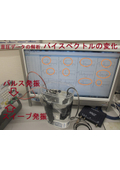

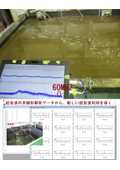
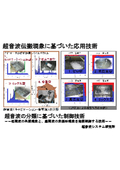
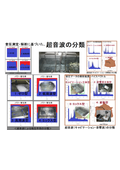
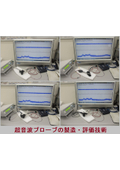

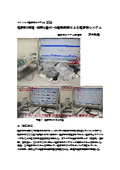
News about this product(19)
Company information
The Ultrasonic System Research Institute conducts the following activities with its original product: ultrasonic systems (sound pressure measurement analysis, oscillation control): 1) Manufacturing and sales of ultrasonic systems (sound pressure measurement analysis, oscillation control) 2) Consulting services for various equipment (Note): cleaning machines, stirring devices, processing equipment, machine tools, plating devices, welding devices, etc. Ultrasonic System (Sound Pressure Measurement Analysis, Oscillation Control) We manufacture and sell a system that combines the "Ultrasonic Tester NA (recommended type)" for easy measurement and analysis of ultrasonic waves and the "Ultrasonic Oscillation System (1 MHz, 20 MHz)" for easy oscillation control. <Patent Applications Filed> Patent Application No. 2021-125866: Ultrasonic Control (Ultrasonic Oscillation Control Probe) Patent Application No. 2021-159990: Ultrasonic Welding Patent Application No. 2021-161532: Ultrasonic Plating Patent Application No. 2021-171909: Ultrasonic Processing Patent Application No. 2021-175568: Flow-type Ultrasonic Cleaning Some of the manufacturing technology for the ultrasonic oscillation control probe is described in Patent Application No. 2021-125866. Patent Application No. 2023-195514: Ultrasonic Plating Using Megahertz Ultrasonic Waves and Fine Bubbles.








